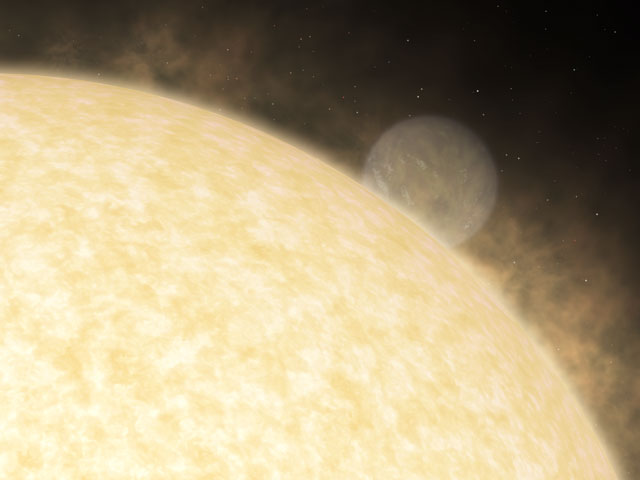
|
Explanation: Light emitted by a planet far beyond our Solar System has been identified for the first time. The planet, illustrated in the above drawing, had its light detected by comparing the brightness of only the parent star, when the planet was behind the star, to the light emitted when both the planet and its parent star were visible. The Earth-orbiting Spitzer Space Telescope made the observation in infrared light, where the intrinsic glow of the planet outshines the light it reflects from its central star. The direct observation of light allowed a measurement of both the temperature and size of the planet: HD 209458b. Planet HD 209458b was confirmed to be larger than expected for its mass and on an orbit around its parent star that was unexpectedly close to a circle.
|
January February March April May June July August September October November December |
| ||||||||||||||||||||||||||||||||||||||||||||||||
NASA Web Site Statements, Warnings, and Disclaimers
NASA Official: Jay Norris. Specific rights apply.
A service of: LHEA at NASA / GSFC
& Michigan Tech. U.
Based on Astronomy Picture
Of the Day
Publications with keywords: planet - light - Spitzer space telescope
Publications with words: planet - light - Spitzer space telescope
See also:
